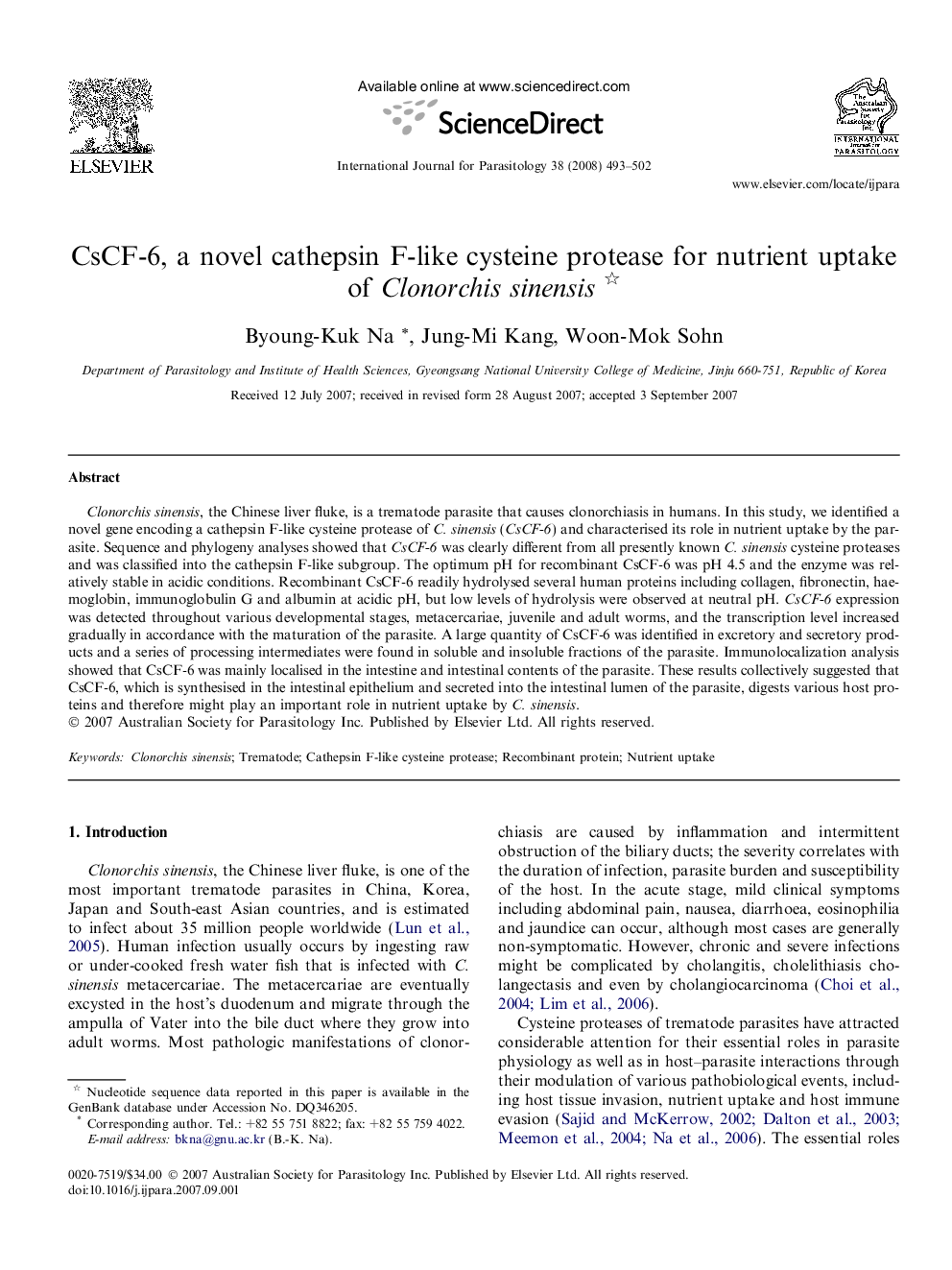| Article ID | Journal | Published Year | Pages | File Type |
|---|---|---|---|---|
| 2436927 | International Journal for Parasitology | 2008 | 10 Pages |
Clonorchis sinensis, the Chinese liver fluke, is a trematode parasite that causes clonorchiasis in humans. In this study, we identified a novel gene encoding a cathepsin F-like cysteine protease of C. sinensis (CsCF-6) and characterised its role in nutrient uptake by the parasite. Sequence and phylogeny analyses showed that CsCF-6 was clearly different from all presently known C. sinensis cysteine proteases and was classified into the cathepsin F-like subgroup. The optimum pH for recombinant CsCF-6 was pH 4.5 and the enzyme was relatively stable in acidic conditions. Recombinant CsCF-6 readily hydrolysed several human proteins including collagen, fibronectin, haemoglobin, immunoglobulin G and albumin at acidic pH, but low levels of hydrolysis were observed at neutral pH. CsCF-6 expression was detected throughout various developmental stages, metacercariae, juvenile and adult worms, and the transcription level increased gradually in accordance with the maturation of the parasite. A large quantity of CsCF-6 was identified in excretory and secretory products and a series of processing intermediates were found in soluble and insoluble fractions of the parasite. Immunolocalization analysis showed that CsCF-6 was mainly localised in the intestine and intestinal contents of the parasite. These results collectively suggested that CsCF-6, which is synthesised in the intestinal epithelium and secreted into the intestinal lumen of the parasite, digests various host proteins and therefore might play an important role in nutrient uptake by C. sinensis.
